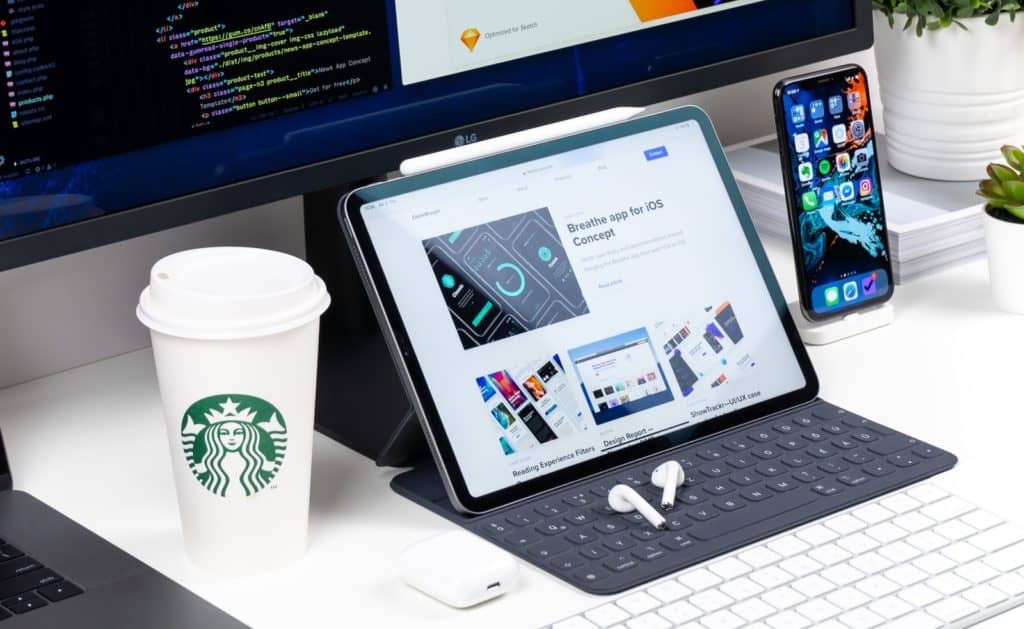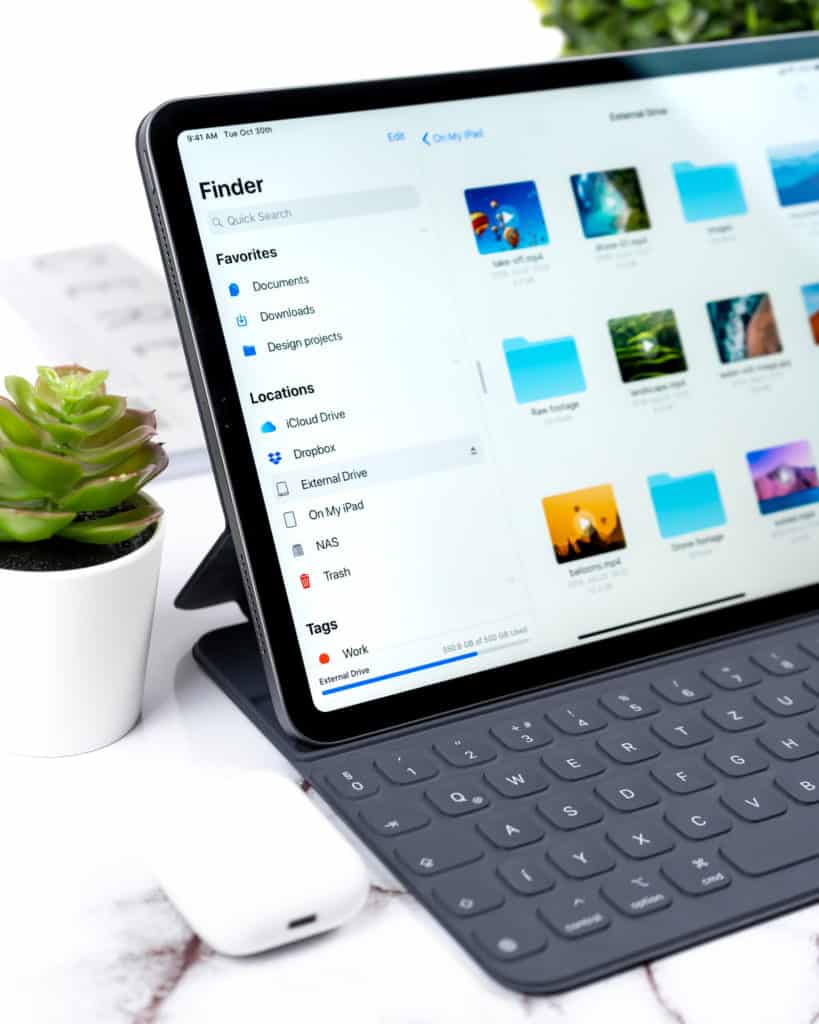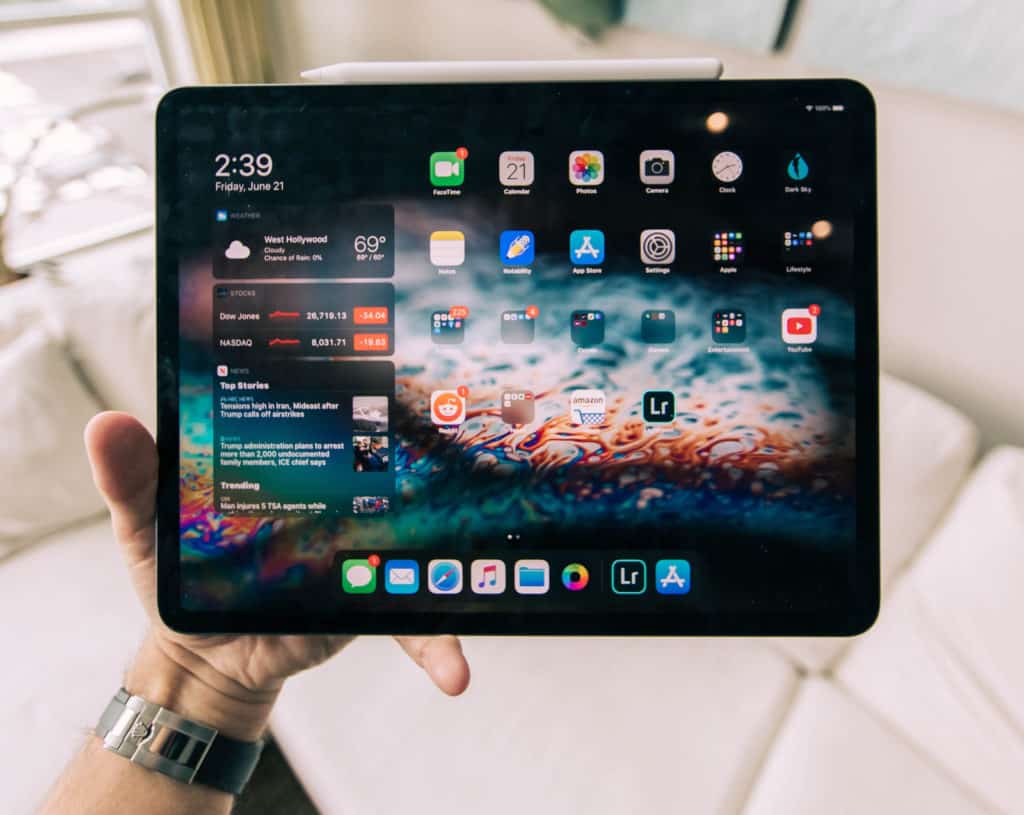Our iPads are more powerful and capable than ever, and some people even consider them a serious alternative for their laptops. But does it really deliver on that promise and should you go iPad only? Here’s how it started, improved, and what might still lack (beyond specs).
How it started: easier, lighter but limited
When Steve Jobs revealed the first iPad in 2010, a part of the tech community was quite skeptical. No Adobe Flash support, no USB, limited multitasking and low storage options of 16GB at a starting price of $499 were the main points of concern. But Apple clearly didn’t design the iPad to be a Laptop in a different form factor. It was a disruptive device, limited in some ways but superior in specific use cases like watching photos on the couch, browsing the web, playing simple games, and reading e-books. The software was designed to be as intuitive, seamless, and accessible as possible, and it was the first touch-screen powered device of that size that was actually user-friendly. Since the iPad uses the same technology as the iPhone, the existing developer base quickly ported their apps to the iPad. Also, most apps took advantage of the iPad’s larger display. Ported apps on Android-tablets, on the other hand, are still looking like simple scaled-up Smartphone-Apps in 2019.
The Pro-Line: High Performance, Productivity Apps like MS Office, improved Typing and Handwriting
In 2010 Apple sold roughly 7.5 million models of the original iPad, in 2018, it was more than 43 million. In total, 360 million iPads have been sold since the initial release. However, in the past nine years, the iPad evolved quite a bit. The first iPads were mainly designed for content consumption but with the introduction of the first iPad Pro in 2015 that changed. Suddenly Apple offered a Pencil, a Keyboard-Cover and the inhouse designed apple ARM-processors surpassed most Intel-powered laptops in performance. Apple also started to market the device as a laptop replacement with its famous and controversial „What’s a Computer?“-Ad and for a reason. Things like handwriting and drawing on a screen are better than ever before and even desktop-class software like Adobe Photoshop, LumaFusion (video editing) and the Microsoft Office Suite are now available on the iPad. However, these developments led to higher expectations from power users towards this device. The more people have tried performing their laptop workflows on the iPad, the more frustrated by the limitations they have become. But Apple clearly limits the iPad in some areas, perhaps not to cannibalize Mac sales too much. On the other hand, it might want to keep the accessibility and simplicity in user experience most customers came to love so much. Despite being increasingly powerful following features of a Laptop are still missing…

Laptop features it lacks (still in iPadOS)
Proper Mouse Support
Yes, the touch interface is what made the iPad distinct from the beginning, but for specific tasks, mice are simply more efficient. Especially when doing complex productivity workflows where typing is combined with extensive (precise) formatting, dragging and dropping and multitasking between apps like MS Office and Safari. With iPadOS, however, there is the option to connect a Bluetooth mouse and use it as an “assistive accessory”. It works well but rather than acting like a mouse cursor on a laptop it is augmenting your finger touch gesture. Also, for the user experience to be as good as on a Macbook, Apple needs to introduce a new Type Cover with a trackpad included which still doesn’t exist. Hence, with are moving towards the right direction with iPadOS but are not quite there yet.
Competing Desktop-Class Browsers
With the introduction of iPadOS, Apple took a big step here. Safari is now a desktop-class browser which by default loads the desktop version of websites and easily handles complex web applications like Google Docs or WordPress. But Apple still only allows third-party browsers to use the Safari engine, which prevents competing Browsers on the iPad. In this case, however, this could also be an advantage for the user since Apple has always been very cautious about maintaining an optimal user experience on iOS devices. Safari is heavily optimized for the OS and browsers like Chrome or Firefox might drain the battery faster, while offering a worse performance.
Advanced File Management and External Drives
Perhaps the most disturbing thing to many people is the weird way iOS (and iPadOS!) handle files. Sure, the Files app that was introduced with iOS 11 in 2017 brought some significant improvements. There is one place to find all the files from different locations, and it still supports various cloud-storage sites like Dropbox, Google Drive, or OneDrive. There are also basic operations like copy, move, rename, search, and info on a file. At the same time, these operations are not implemented consistently within the app. For example, in some locations, it’s not possible to create folders or rename files.
Another disturbing thing is the files are still mostly tied to an app. If you move a file into an app, it’s copied, not moved. It’s not possible to edit the same file in different apps. Simple things that come naturally with working on a Laptop are still missing on the iPad in 2019.

Advanced Multitasking
Multitasking is another significant advantage that Laptops still have. You can open as many apps and windows simultaneously as you want, and only RAM and CPU are limiting factors. Not quite so on the iPad. Yes, running two apps side-by-side is possible and even moving in a third one in “iPhone”-size (at least on iPad Pro models). But it’s really up to the developer to support that, and many major apps (for example Gmail!) are still not supporting side-by-side. iPadOS improves this experience and brought multi-window support per app and more. But comparing it with computers powered by Windows or macOS, it’s still lagging behind. Even though the three apps showing on the screen run simultaneously, there is no way to keep the background apps running. This obviously increases battery life, but unlike with a laptop, you can’t do things like transcoding a video in the background while working on a word document and doing some research on the web. Another limitation is external monitors. As of now, it’s only possible to mirror what it is shown on the iPad. This doesn’t come in handy if you need the extra real estate of a big screen.
Ability to Install Apps from Multiple Sources
The exclusivity Appstore has been controversial from the very beginning. Sure, the fact that you can only install apps from Apple’s well-guarded heaven also has its pros like protection from malware and consistent user experience. However, the rules are strict, and some apps might never be usable on an iPad without jailbreaking it. Some people like to download torrents for example, but torrent-clients are not allowed in the Appstore. If Apple wants the iPad to be a true laptop replacement, it should definitely at least ease the rules for allowing apps on its own store.

Purpose of iPad today and in the future
All in all, consider this: you could go on a hike wearing slippers, and you could also spend a day at the beach in your walking boots. But neither of the two experiences will be satisfying. And it’s the same thing with iPads and Laptops: I don’t think Apple wants everyone to replace their laptops with the iPads. It’s all about taking advantage of either device category in the specific use case. With the Apple Watch, Apple is doing a similar thing to the iPhone with the goal for people to use their iPhones for simpler things like reading a text message. Of course, if Apple keeps adding new features to the iPad, people who never go “hiking” might end up being happy with an iPad as their only computing device. For all the rest of you: better keep the good old walking boots around for a bit longer.

Editor’s Recommendation
Check out following links for more on the topic:
- Apple’s famous and controversial “What’s a computer”-Ad à https://www.youtube.com/watch?v=llZys3xg6sU
- Examples of limitations of Files App on iPad à https://www.youtube.com/watch?reload=9&v=HNg3cNl_v7Q&feature=youtu.be
Famous Tech Youtubers on iPad as potential laptop replacement with iPadOS
- Linus tech tips: https://www.youtube.com/watch?v=vUB_EwNuSPY
- Marques Brownlee: https://www.youtube.com/watch?v=dZ_Ab1XxxKg
- The Verge: https://www.youtube.com/watch?v=LykS0TRSHLY
Contents